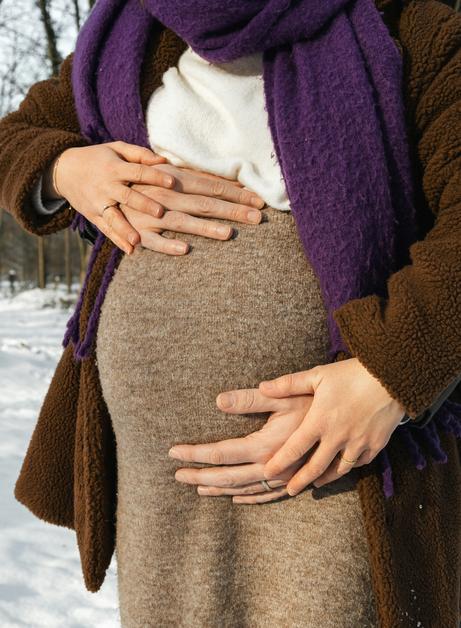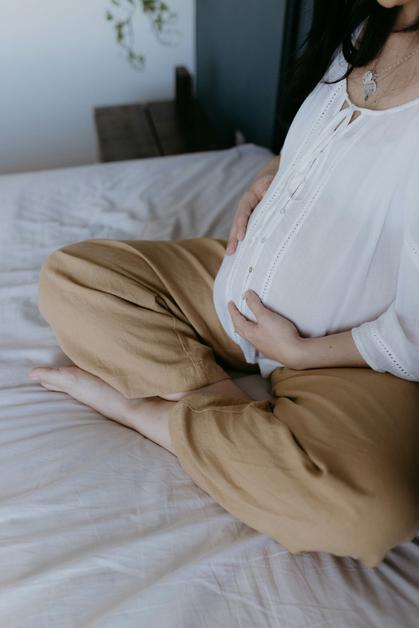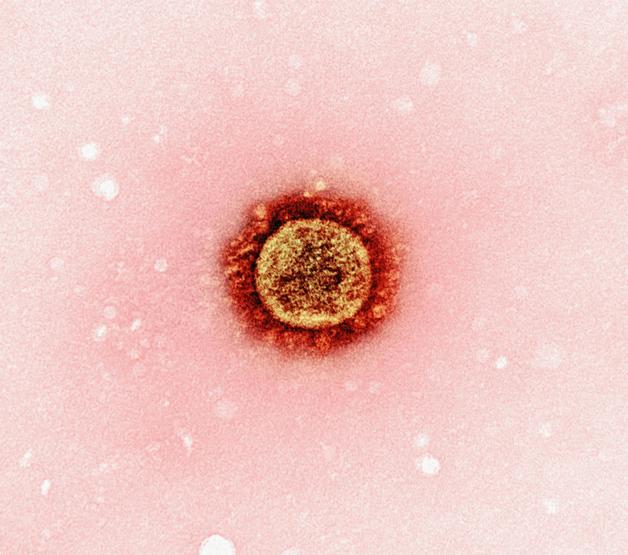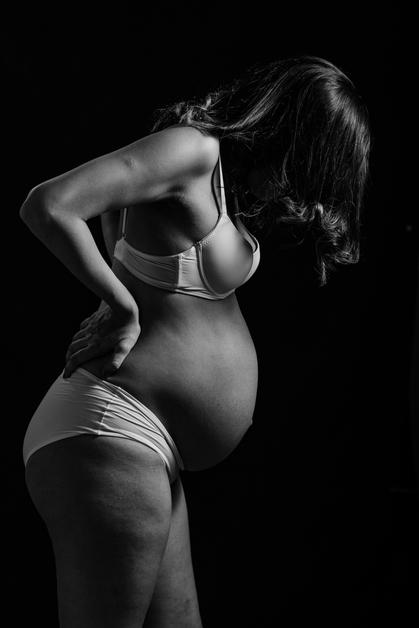The experience of pregnancy is marked by rapid changes and inevitable questions, and for some parents, vulvar varices during pregnancy can be an unexpected and disconcerting discovery. Perhaps you have noticed bulging, bluish veins on the vulva, a sense of heaviness, or localized discomfort that seems to intensify after standing or towards the end of the day. You might be asking yourself: Is this normal? Will it impact delivery or daily life? What can be done to relieve symptoms or to support wellbeing until your body bounces back after childbirth? Rest assured, answers exist. Understanding how these veins behave, what triggers them, and which options exist for comfort and care is the first step to reclaiming peace of mind. Let’s delve into their origins, discover simple and effective strategies for daily relief, and clarify when it’s wise to seek medical advice.
Understanding Vulvar Varices During Pregnancy
What Exactly Are Vulvar Varices?
Medical professionals define vulvar varices during pregnancy as engorged, twisted veins located on the external genitalia, typically the labia majora or minora. Behind the scenes, your body’s circulating blood volume surges by up to 50% in pregnancy. Combine that with elevated estrogen and progesterone—hormones renowned for relaxing blood vessel walls—and you have the perfect physiological setup for these veins to dilate and sometimes become visible, swollen, or even tender.
The pelvic venous network is interconnected and intricate; veins of the vulva link directly to deeper pelvic vessels like the internal iliac vein and pudendal veins. Any increase in intra-abdominal or pelvic pressure (think: expanding uterus, extra weight, or even just gravity during long periods of standing) encourages venous blood to pool, leading to the characteristic bluish, bulging clusters seen with vulvar varices during pregnancy.
How Are Vulvar Varices Different from Leg Varicose Veins?
Curiously, while both types of veins are manifestations of venous dilation and sluggish blood return, vulvar varices during pregnancy react almost exclusively to pelvic-specific forces. Unlike leg veins, which drain upward against gravity, vulvar veins are influenced by hormonal surges, direct fetal pressure on the pelvis, and even changes in body mechanics as pregnancy advances. Leg varicosities may linger, but vulvar varieties typically subside within weeks after birth thanks to rapid hormonal shifts and relief of pressure.
Who Gets Vulvar Varices During Pregnancy?
Statistics estimate that between 8% and 20% of pregnant women develop vulvar varices, versus only about 4% outside of pregnancy. Genetics (family history of varicose veins or weak vein valves) play a substantial role. Other shaping factors: obesity, excessive weight gain, sedentary habits, regular constipation (which increases pressure when straining), or even jobs that require prolonged standing.
Recognizing the Signs and Symptoms
What Might You Notice?
Symptoms often unfold gradually. Perhaps you sense a subtle pelvic fullness or heaviness—distinct, but hard to pinpoint. On closer inspection, purplish or blue, rope-like veins may be visible, soft to the touch or forming spongy clusters. Some report sharp, burning, or throbbing pain, tenderness that intensifies with activity, or discomfort during intimacy. The swelling typically changes during the day, resolving somewhat after rest.
How Is It Diagnosed?
A skilled healthcare provider will listen to your concerns and perform a physical exam while you’re both lying down and standing. This dual approach reflects that many vulvar varices during pregnancy become more prominent with gravity. In ambiguous cases, a Doppler ultrasound is performed, offering a non-invasive “map” of superficial and deeper pelvic veins, quickly distinguishing varicosities from other causes like Bartholin cysts, abscesses, or rare vascular malformations.
Causes and Risk Factors
What Drives These Changes?
Hormonal Loosening: During pregnancy, progesterone and estrogen naturally diminish vascular tone, making vein walls supple and more susceptible to stretching.
Mechanical Forces: The uterus (and sometimes the growing baby or excess amniotic fluid) exerts significant pressure on the pelvic veins, slowing down the flow and favoring stasis in vulvar branches.
Contributory Elements: Chronic constipation, obesity, pre-existing varicose veins, rapid pregnancy weight gain, and even fashionable but restrictive clothing all play supporting roles.
Impact on Pregnancy, Delivery, and Daily Life
Daily Realities
The emotional landscape can be surprisingly challenging. For some, vulvar varices during pregnancy may cause embarrassment or anxiety about talking with healthcare providers or partners, especially if intimacy becomes uncomfortable.
Practically, symptoms might limit daily movement, choice of activities, or even standing comfortably for routine tasks. Sometimes, support garments and adaptive strategies become not just helpful, but essential.
Will It Affect Birth?
Vaginal delivery remains safe for nearly all women with vulvar varices during pregnancy. The risk of major bleeding is impressively low—even with large or ropey veins—because skilled obstetricians are well-versed in gentle techniques, prompt compression, and (occasionally) minor local interventions if needed. C-section is reserved only for the rarest of cases (such as extensive, tense varicosities at imminent risk of rupture).
Strategies for Relief and Prevention
Lifestyle Modifications
- Alternate positions regularly: standing, sitting, and gentle walking all help keep blood moving.
- Elevate hips and legs when resting—sometimes a stack of pillows does wonders.
- Loose clothing: Avoid tight underwear, leggings, or anything that compresses the groin.
- Fiber-rich diet: Sufficient hydration and plenty of vegetables combat constipation—a major aggravator.
- Gentle movement: Prenatal yoga, swimming, or simple stretching maintain muscle tone and vascular return.
Additional Supportive Measures
- Compression shorts or support underwear specifically designed for pregnancy apply gentle, targeted pressure to the vulvar and pelvic veins, often described as « game-changing » by many parents.
- Cold applications: Briefly applying a wrapped cold pack or taking a cool shower can soothe local swelling and burning sensations.
Medications and Remedies
Acetaminophen is typically safe for pain; however, avoid anti-inflammatory drugs without medical consultation. Some parents opt for gentle creams (like zinc oxide) for local comfort. Herbal remedies such as horse chestnut or witch hazel are sometimes suggested for mild cases—always under medical supervision due to limited evidence in pregnancy.
When to Consult a Healthcare Provider
Certain changes demand swift communication with your provider:
- Red, hot, or severely painful veins (possible thrombosis, meaning a blood clot requires urgent evaluation)
- Rapidly enlarging swelling or significant bleeding
- Sudden, firm, or tender rope-like areas
- Any change that feels alarming or persists past delivery
Persistent symptoms beyond eight weeks postpartum or any sign of systemic illness warrants reassessment; rarely, advanced imaging (MRI or selective venography) becomes necessary for complex or resistant cases.
Postpartum Outlook and Long-Term Considerations
Natural Regression
The overwhelming majority of vulvar varices during pregnancy diminish and disappear within five to eight weeks after birth. With the precipitous drop in pregnancy hormones and lessened venous pressure, the body’s natural equilibrium is restored.
What if Varices Remain?
Ongoing discomfort or veins that fail to resolve by three to nine months often prompt a discussion about individualized solutions. Modern therapies—sclerotherapy (a minimally invasive injection that closes abnormal veins), embolization (blocking problematic vessels from within), or, rarely, surgical excision—may be considered, always tailored to each individual’s anatomy and medical background.
Risk of Recurrence
Yes, vulvar varices during pregnancy can reappear in subsequent pregnancies, especially if underlying risk factors persist. Continuing healthy lifestyle habits and maintaining regular conversations with your care team fosters preparedness and early intervention.
Key Takeaways
- Vulvar varices during pregnancy affect a significant proportion of expectant parents—often benign, usually resolving on their own, and rarely compromising delivery.
- Hallmark features include swelling, visible blue veins, heaviness, and variable discomfort that may fluctuate with time of day or activity level.
- Diagnosis rests on clinical evaluation and, where needed, Doppler ultrasound imaging.
- Prevention and symptom relief hinge on smart lifestyle choices—gentle physical activity, loose clothing, fiber-rich nutrition, the use of supportive garments, and cold compresses.
- Bleeding or rapid changes in the appearance or sensation of vulvar varices requires prompt medical assessment.
- For persistent or severe cases, advanced therapies exist and can be discussed with vascular specialists.
- Parenting and pregnancy are journeys filled with adjustments—there are effective medical solutions and caring professionals available to guide each step.
Looking for further support, tailored health tips, or free child health questionnaires? Download the Heloa app for personalized advice and practical tools to empower your parenting journey.
Questions Parents Ask
Can vulvar varices be itchy or cause discomfort besides pain?
Yes, vulvar varices can sometimes lead to sensations beyond just pain. Many parents mention experiencing itchiness, swelling, and even a sense of warmth or heaviness in the vulvar area. These symptoms, though often bothersome or worrisome, sont tout à fait normaux during pregnancy when the veins in the pelvis are under added pressure and hormonal influences. Adopting supportive undergarments and keeping the area clean and dry may help ease this discomfort. Applying a cool compress can also offer short-term relief. If symptoms persist or worsen, n’hésitez pas à échanger avec un professionnel de santé pour être accompagné(e).
Is there any risk if vulvar varices persist after pregnancy?
Vulvar varices usually fade within weeks after birth, but dans certains cas, they may take longer to resolve or remain visible. Le plus souvent, ces varicosités ne posent pas de problème majeur, mais il convient de rester attentif(ve) à tout changement important ou symptôme inhabituel. Si vous observez un gonflement persistant, une douleur importante ou toute modification de l’aspect, un suivi médical s’avère utile afin de rassurer et d’envisager, si besoin, des options douces comme un suivi spécialisé ou des traitements adaptés. Rassurez-vous, des solutions existent pour accompagner chaque situation.
What treatments are available if vulvar varices do not go away on their own?
When vulvar varices persist beyond the postpartum period and cause lasting discomfort, différentes options peuvent être envisagées. Des traitements comme la sclérothérapie – une technique permettant de fermer les veines concernées grâce à une injection ciblée – peuvent parfois être proposés. D’autres solutions, comme l’utilisation de bas de contention adaptés ou la prise en charge par un spécialiste de la circulation veineuse, permettent d’améliorer le confort au quotidien. Any decision will be made with careful attention to personal needs and under medical guidance. N’hésitez pas à demander conseil : votre bien-être compte, et chaque situation mérite une attention personnalisée.

Further reading:









